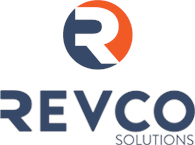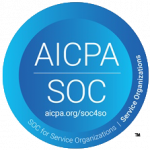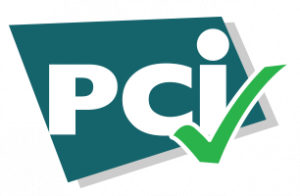“Work from home” and “working remotely” have become common phrases in the current circumstances from the COVID19 pandemic.
State, county, and government teams have been forced to adjust to this new way to work. While many companies have previously hired remote team members, governments don’t typically operate that way. Having teams spread out, and communication occurring through video conferencing and phone calls has been challenging. For some groups, this has been an easier transition than for others.
It is necessary to have the tools needed to make working remotely successful for your team and your constituents for now and in the future. Here are some of the lessons we’ve learned.

Use clear communications.
Communication is critical at a time like this. The guidelines our organizations have been shifting rapidly, and in some cases, local city mayors are adding to or modifying procedures being implemented by state officials. Your team should know that you are prioritizing clear communication and adding tools to achieve improved communication flows.
Employees who are new to working from home can experience a sense of being disconnected if they are used to the quick responses available in an office environment. Indeed, using a trusted video conferencing platform can assist with meetings, but do you have a quick-response method or process in place for employees? You can help them feel supported during this uncertain time. Listening is also an essential part of communication, so make sure you are tuning in to your employees and are fully engaged when interacting with them – especially since you do not see them in person.
We have invested in Microsoft Teams, which allows us to communicate by sending messages instantly to individuals or groups that we have created on the platform. Here is a resource detailing the pros and cons of The 9 Best Communication Tools for Remote Working Teams. Some of these solutions are free, while others have varied costs. It really depends on how much complexity you need or wish to integrate into your platform.
Look at meeting frequency.
Along with the communication piece, you should take a close look at your meeting frequencies and adjust for maximum impact. There is no perfect amount of communication and meetings, so this should be an iterative process, improving with your team’s feedback.
Virtual meetings are undoubtedly different than in-person meetings. You will want to make sure that you allow each person to speak, comment, or ask questions. Most of the video conference platforms linked above include ways for those attending a meeting to raise their hand and indicate they wish to ask questions. Most also have the ability for an attendee to use a chat function to send a message to a person or the entire group.
Here are some ideas:
- Set up a weekly meeting to check in with your team.
- Check with individual team members to see if they would benefit from weekly 1-on-1s. Schedule these on your shared calendars.
- Every month or so, ask the team how the meeting cadences are being received and adjust accordingly.
- Add individual recognitions and “shoutouts” into your meetings and other communication to show appreciation.
- Meetings are not the only place for communication. Make sure you are looking at other tools and technology you can use better to manage your day-day and email and chat channels.
Create opportunities for making personal connections.
When we work in the same office space with our colleagues, we can bump into them in the kitchen, waiting for the first pot of coffee to finish brewing. We also catch teammates in the elevator and end up joining them for lunch. This does not happen with remote and distributed teams. As a result, it can be difficult for team members to build personal connections with each other.
Personal connections are a cornerstone of productive teams. They are just as important when working on remote or distributed teams but are harder to develop and maintain.
We are using Microsoft Teams for all departments and a Gamification Platform to facilitate increased personal connections between call center staff and department members.
Gamification is used to help drive performance and results by creating contests and competitions. Games and incentives are fun concepts that most agents enjoy, but they can be challenging to manage. Agents can participate in several contests at once and follow their rankings throughout the day, week, and month. It includes a social media-like component for all staff members to post, comment, challenge and encourage each other.
According to the State of Remote Work study, 21% of workers believe loneliness is the number one challenge with working remotely. Loneliness is at a concerning level in America. Being away from the office and coworkers can make remote workers feel lonely. Some workers believe their moments of loneliness impact productivity, connection to teammates, and all-around wellbeing.
What can leadership do to combat loneliness in their employees?
- Healthy habits – Structure and routine are proven methods for helping offset the effects of depression. Setting regular schedules and checking in with employees is an excellent way to add structure to the new, looser work environment.
- Set boundaries – Remote workers often work harder to prove they are productive, and the blurred lines of at-work vs. at-home makes it more difficult to entirely turn off at the end of the day. The result is an increased risk of burnout. Encourage employees to take breaks, shut down their computer at the end of the day, turn off their phone notifications, and put up strong barriers between work life and home life.
- Build a community – We are all in this together, so show it! Encourage employees to talk openly about what they are going through (The kids keep picking the lock to the office door! My spouse keeps drinking all the coffee!) Empathizing with each other and having a shared experience builds community and strengthens relationships among employees while they are physically distant.
- Provide opportunities to connect – Arrange options for staff to split time between the office and to work remotely made the happiest employees. While this is more difficult during an event like the Coronavirus pandemic, we can do a virtual version of a similar philosophy. Provide employees and teams with virtual conference rooms to work on projects together, have virtual coffee breaks, and schedule regular team meetings for some face time and make sure everyone stays on the same page. Some staffs share a “virtual happy hour” with BYOB or refreshments.
- Show appreciation – It is imperative to let employees know they are seen. Recognition and appreciation go a long way in keeping morale high and showing team members that you value their work contributions. It can be as simple as a shoutout on the company communication channel, or more formal like praise at the virtual all-staff weekly meeting.
- Provide ways to grow – Things will be different, but do not have to be on hold or stagnant. Let your team know that employees are not stalled during their time at home. Encourage them to take on learning initiatives, start new projects, and cross-train other departments. Give them a future to look forward to.
How is your local government team making remote work possible? If collecting revenues is a challenge, contact us for help.






